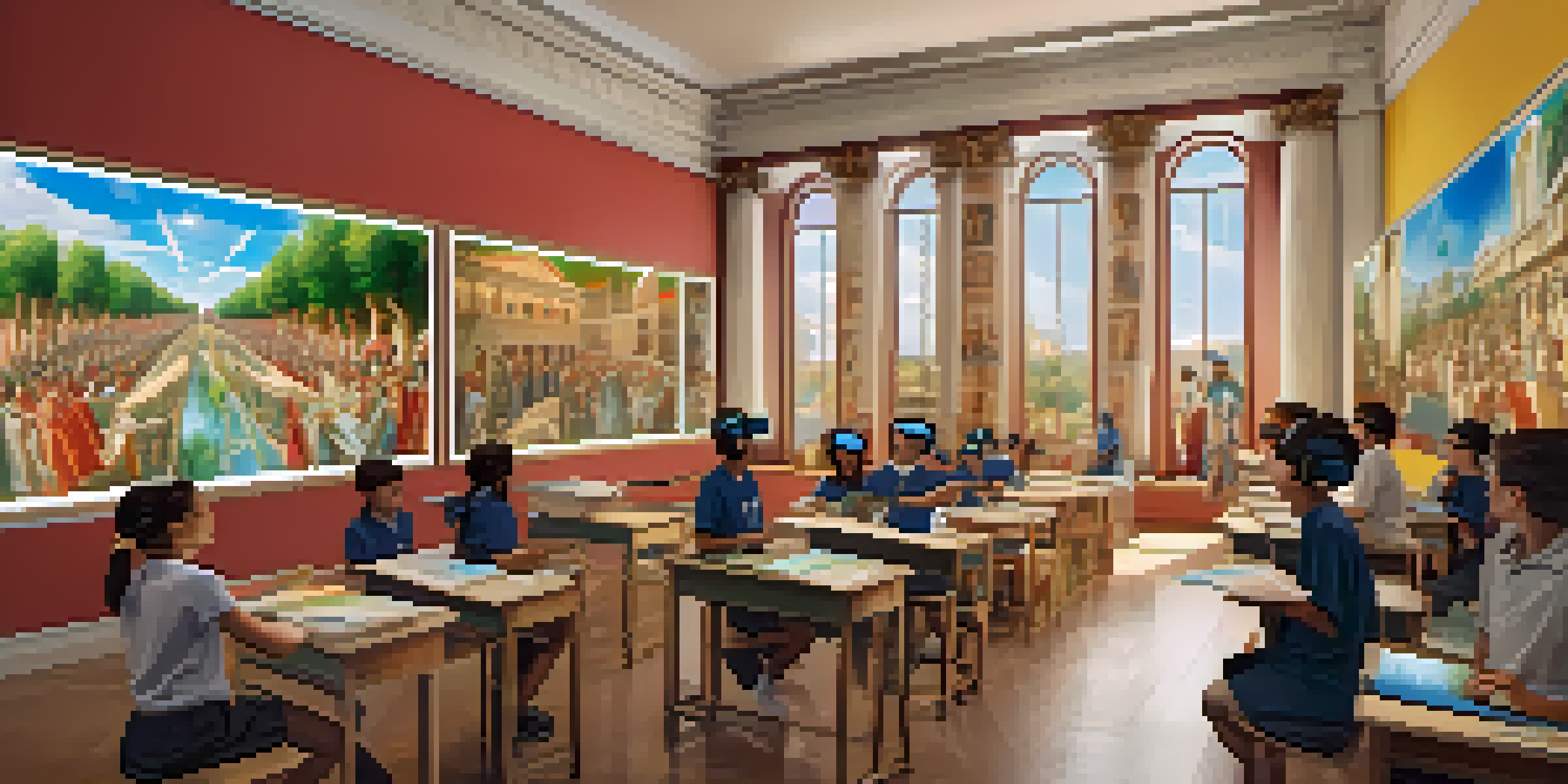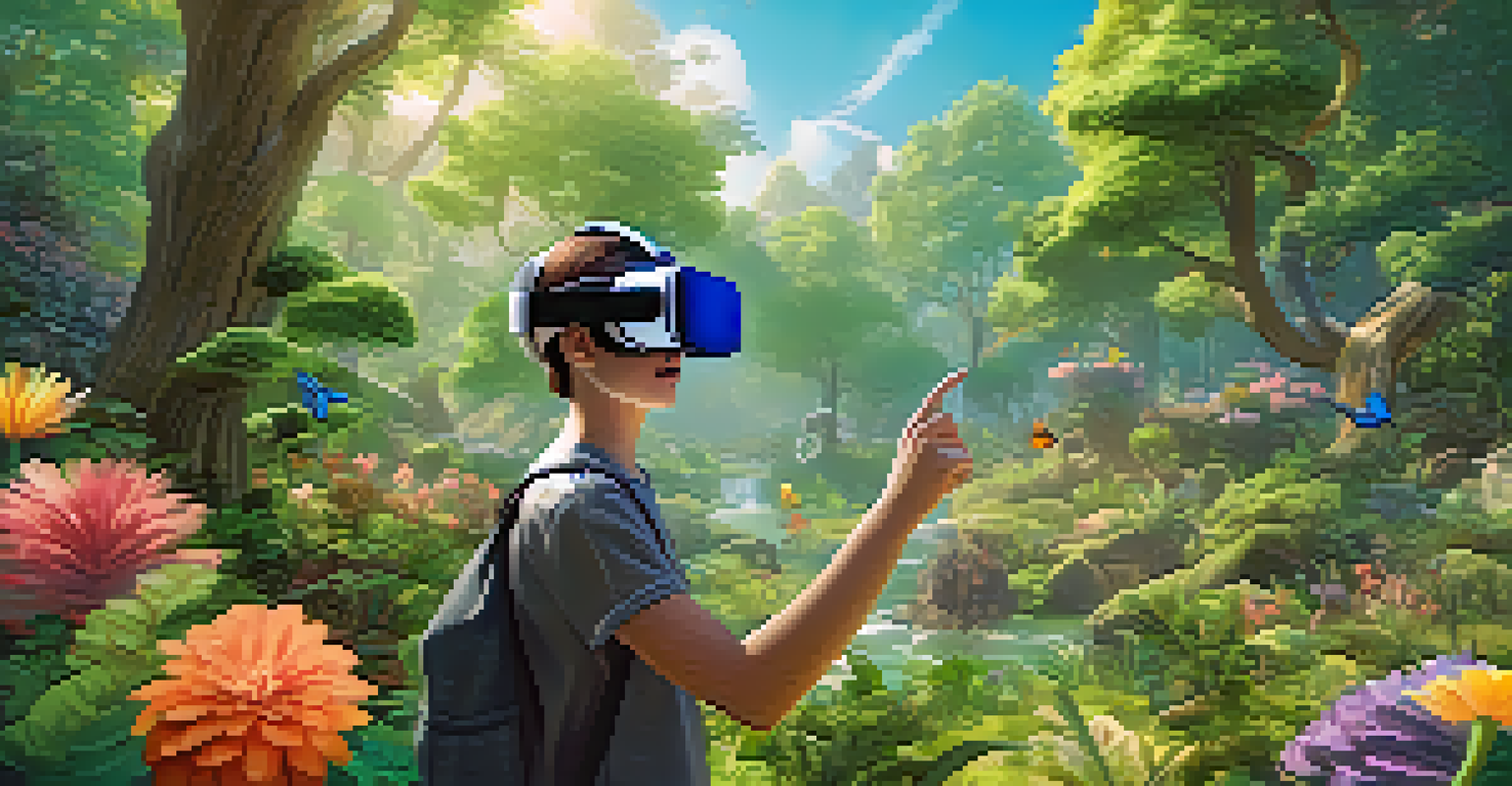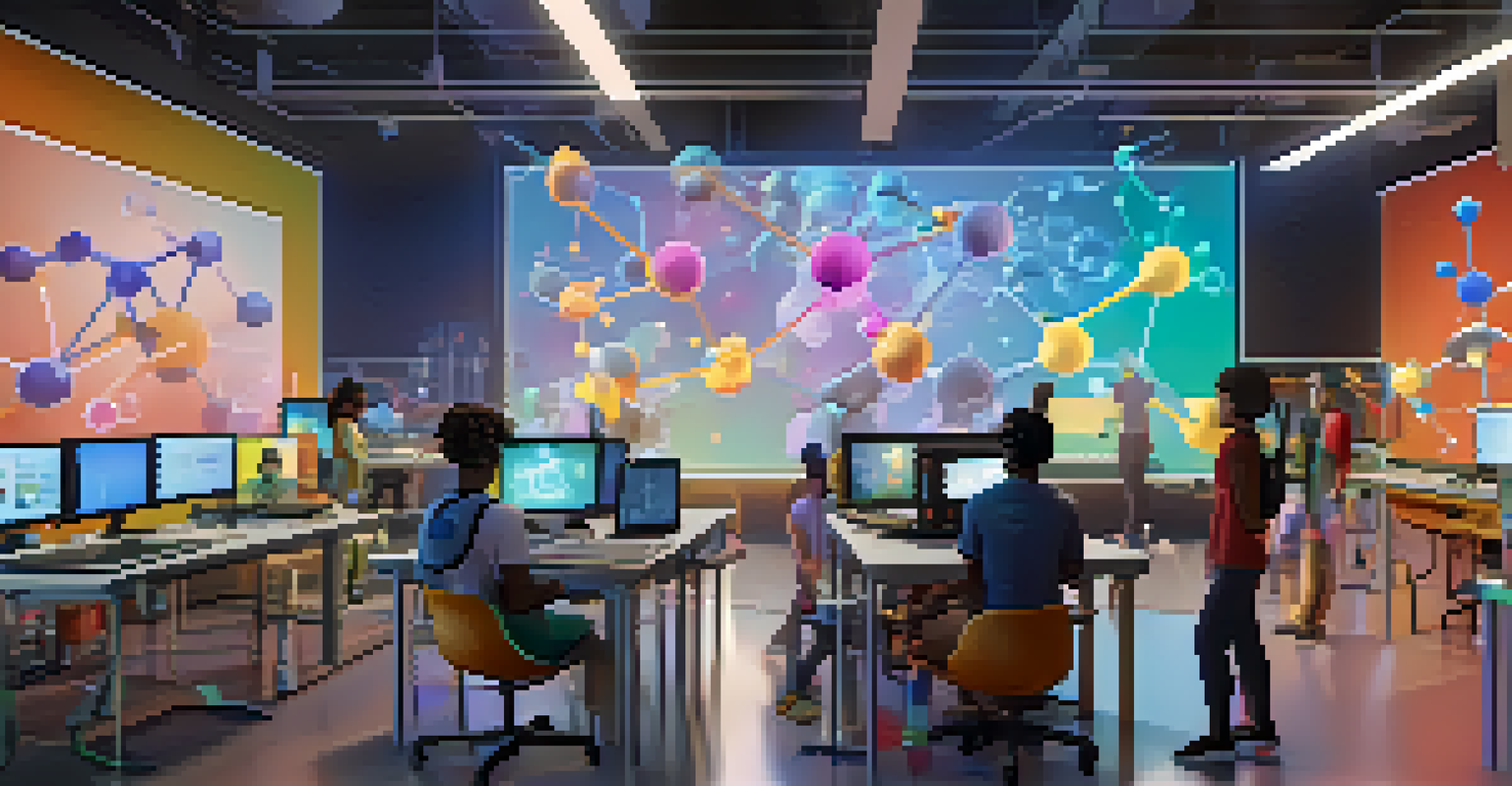The Impact of VR on Motivation and Engagement in Learning

Understanding Virtual Reality in Education
Virtual reality (VR) has emerged as a groundbreaking tool in education, enabling immersive experiences that traditional methods often lack. By simulating real-world environments, VR allows students to engage in learning activities that feel more interactive and realistic. Imagine stepping into a historical event or exploring the human body from the inside—these are possibilities with VR.
Virtual reality is the ultimate empathy machine.
This technology broadens the horizons of learning, making complex subjects more tangible. For example, medical students can practice surgeries in a virtual setting without any risk, while language learners can converse with avatars in a simulated environment. Such applications highlight how VR transforms abstract concepts into relatable experiences.
As VR continues to evolve, it presents exciting opportunities to enhance educational outcomes. By understanding its potential, educators can better harness VR to create dynamic learning experiences that foster both motivation and engagement among students.
Motivation Boost through Immersive Experiences
One of the most significant impacts of VR in education is its ability to boost student motivation. When learners are immersed in a captivating virtual world, they are often more eager to participate and explore. This heightened engagement can lead to deeper understanding and retention of information.

For instance, students studying biology might find themselves more invested when they can virtually dissect a frog instead of using a textbook. This hands-on approach not only captures attention but also makes learning enjoyable, encouraging students to take an active role in their education.
VR Boosts Student Motivation
Immersive virtual experiences enhance student engagement, making learning more enjoyable and effective.
Moreover, VR can cater to various learning styles, making education more accessible. Visual learners thrive in immersive environments, while kinesthetic learners benefit from interactive simulations. By appealing to diverse preferences, VR can inspire motivation across the board.
Enhancing Engagement through Real-World Scenarios
Engagement in learning is crucial for academic success, and VR excels at creating real-world scenarios that captivate learners. By placing students in realistic situations, they can practice problem-solving and critical thinking skills in a safe environment. This experiential learning approach can significantly enhance retention and application of knowledge.
The great thing about virtual reality is that it's a new world. It's a world where you can create things that don't exist in the real world.
For example, a history class might take students on a virtual tour of ancient Rome, allowing them to explore landmarks and interact with historical figures. Such experiences not only make the subject matter more relatable but also foster a sense of connection to the content being studied.
As students engage in these scenarios, they are more likely to feel a sense of ownership over their learning. This active involvement can lead to increased confidence and a willingness to tackle challenging subjects, ultimately enriching their educational journey.
Personalization of Learning Experiences with VR
Personalization is a key factor in effective education, and VR offers unique opportunities to tailor learning experiences to individual needs. With the ability to adapt content and pace, students can engage with material that aligns with their interests and abilities. This level of customization can significantly enhance motivation and engagement.
For instance, a student struggling with math can enter a VR environment where they tackle problems through games tailored to their skill level. This approach not only makes learning fun but also ensures that students are challenged appropriately, preventing frustration or boredom.
Personalized Learning with VR
Virtual reality allows for tailored educational experiences that cater to individual student needs and interests.
By leveraging VR technology, educators can create more inclusive classrooms where every student feels valued and engaged. Personalization transforms the learning experience, fostering a supportive atmosphere that encourages exploration and growth.
Collaborative Learning Opportunities in VR
Collaboration is a vital skill in today's world, and VR can facilitate teamwork in a unique way. Through virtual environments, students can work together on projects, share ideas, and solve problems, bridging geographical gaps. This collaborative aspect of VR not only enhances engagement but also cultivates essential social skills.
Imagine a group of students from different parts of the world collaborating on a science experiment in a shared virtual lab. They can communicate in real-time, experiment, and discuss findings, all while experiencing the benefits of teamwork. Such interactions can lead to rich discussions and diverse perspectives.
By promoting collaboration, VR helps students develop a sense of community and belonging, which is crucial for motivation. When learners feel connected to their peers, they are more likely to engage actively in their studies and support one another's growth.
Overcoming Barriers to Learning with VR
VR technology can also help overcome various barriers to learning, such as disabilities or limited access to resources. By providing alternative ways to engage with content, VR can ensure that all students have equal opportunities to succeed. This inclusivity is essential for fostering motivation and engagement across diverse learner populations.
For example, students with physical disabilities can explore environments they might not be able to access in real life. Similarly, learners in remote areas can participate in virtual classes that connect them with educators and resources they otherwise wouldn't have. These possibilities highlight VR's role in bridging gaps and enhancing educational equity.
Collaborative Learning in VR
VR facilitates teamwork across geographical boundaries, fostering essential social skills and a sense of community among students.
By addressing these barriers, VR creates a more supportive learning environment. When students feel empowered and included, their motivation to learn naturally increases, leading to better educational outcomes.
Future of VR in Education: Trends and Innovations
The future of VR in education holds immense potential, with ongoing trends and innovations poised to further enhance motivation and engagement. As technology advances, we can expect more sophisticated and user-friendly VR platforms tailored for educational purposes. These innovations will likely make VR more accessible to schools and learners alike.
Emerging trends, such as gamification and adaptive learning, will continue to shape the VR landscape. By integrating game-like elements, educators can create more engaging experiences that motivate students to persist in their studies. Additionally, adaptive learning technologies will allow VR experiences to evolve based on individual progress, making learning even more personalized.

As we look ahead, the integration of VR in education promises to revolutionize how we teach and learn. By embracing these advancements, educators can cultivate environments that inspire curiosity and foster a lifelong love for learning.